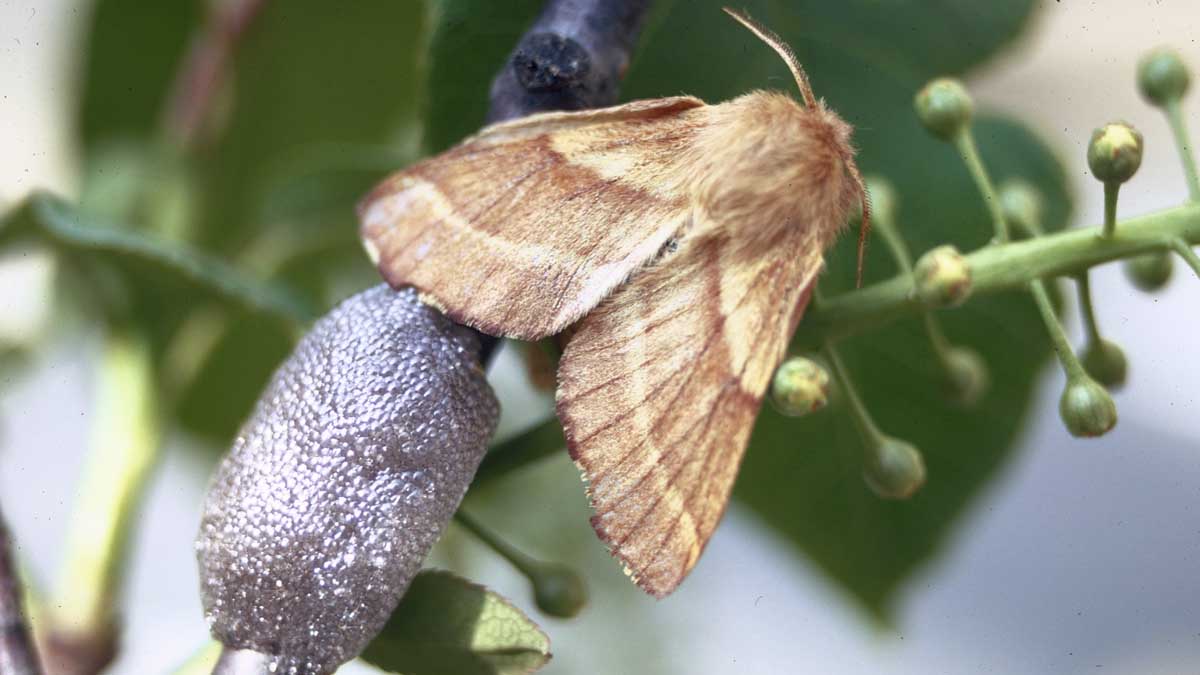Tentworms
Pest Common Name
- Tent Caterpillar, Tentworm (Malacosoma disstria Forest Tent Caterpillar; Malacosoma californica Western Tent Caterpillar)
- Deciduous trees and shrubs
Adults are stout, light to dark brown moths that are usually seen in midsummer (Figure 1). Larvae are hairy, dull-colored caterpillars with a variety of colored spots along their sides. Larvae feed on the host plant’s leaves in silken tents.
Biology
Tent caterpillars overwinter as eggs laid in masses on branches, twigs or buildings (Figure 2). There is only one generation per year.
Damage
- Usually are only a problem if they occur on the same plant for multiple years
- Can defoliate small trees if not controlled
- This pest mostly weakens the tree/shrub, which causes additional pests and diseases to attack the tree
- Look for egg masses in late summer to fall
- Watch for worm damage in the spring and silken tents


Management
Physical (direct physical manipulation of the pest or its environment, e.g. hoeing, tilling, using physical barriers or traps)
- Remove and destroy overwintering egg masses when pruning
Biological
- Many natural predators like birds, small mammals and tachinid flies
Cultural (changing the way the crop is grown to make it less suitable for the pest or to enhance its ability to withstand pest attack)
- Keep trees healthy
Chemical
- Use dormant season oils for egg control
- Caterpillars can be controlled when small if sprayed early in the spring after egg hatch
- Plant-specific recommendations for pesticides to use in the management of tent caterpillars can be found on the PNW Insect Management Handbooks website
Pesticide Warning
Always read and follow the instructions printed on the pesticide label. The pesticide recommendations in this University of Idaho webpage do not substitute for instructions on the label. Pesticide laws and labels change frequently and may have changed since this publication was written. Some pesticides may have been withdrawn or had certain uses prohibited. Use pesticides with care. Do not use a pesticide unless the specific plant, animal or other application site is specifically listed on the label. Store pesticides in their original containers and keep them out of the reach of children, pets and livestock.
Trade Names — To simplify information, trade names have been used. No endorsement of named products is intended nor is criticism implied of similar products not mentioned.
Groundwater — To protect groundwater, when there is a choice of pesticides, the applicator should use the product least likely to leach.
- Figure 1. USDA Forest Service, Bugwood.org (Jerald E. Dewey)
- Figure 2. Colorado State University, Bugwood.org (Whitney Cranshaw)
Andy West, Extension Educator, Horticulture
2023








